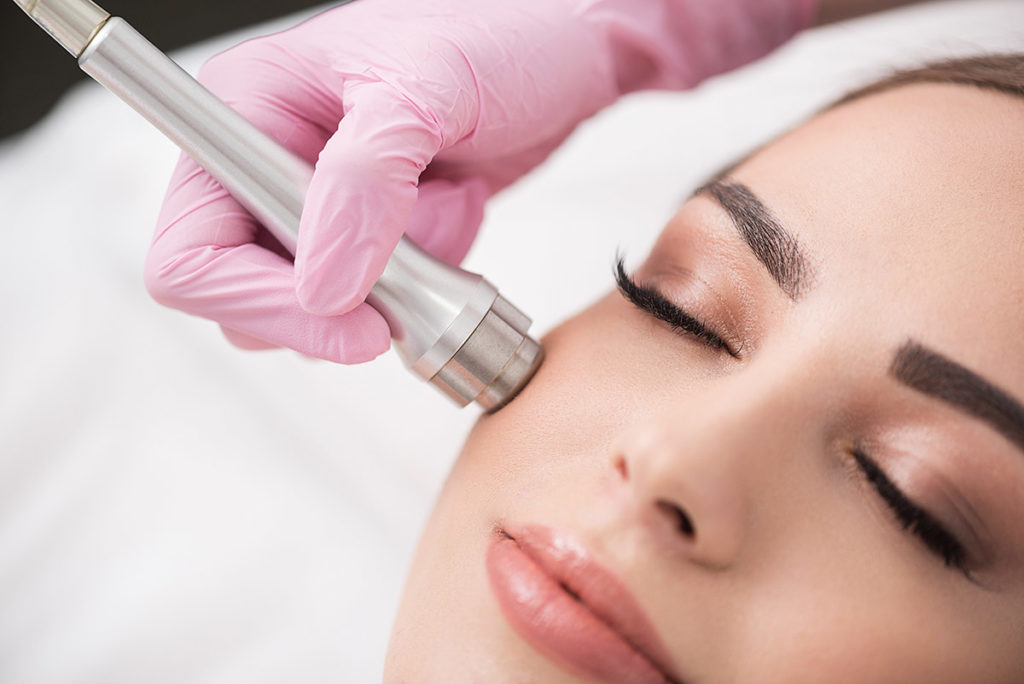
If you are looking for a clearer, more even complexion, microdermabrasion is a minimally invasive skin rejuvenation procedure that might help you. Microdermabrasion treats acne, light scarring and discoloration and also just improves skin texture.
While at-home kits are available, they don’t deliver the precise and high-quality exfoliation you will receive from a series of treatments at a dermatologist’s office.
Read on to learn about what microdermabrasion is, what skin conditions it can improve and what to expect before, during and after the treatment.
What is microdermabrasion?
A professional microdermabrasion treatment uses a crystal-emitting handpiece to gently spray fine crystals to exfoliate dead skin cells from the outermost layer of the skin and gently polish it. This outermost layer of skin, known as the epidermis, is susceptible to sun damage, which can age the appearance of the skin.
The other layer of skin, known as the dermis, is made up connective tissue like collagen and elastin fibers. The connective tissues make the skin elastic, but as over time that support network weakens. Microdermabrasion, however, helps thicken up that collagen to make the skin look more youthful.
Microdermabrasion reduces the appearance of certain skin conditions. It can:
- Improve skin tone, skin texture, and the appearance of hyperpigmented or darkened spots
- Minimize fine lines
- Decrease enlarged pores and blackheads
- Treat acne and acne scars
- Brighten a dull-looking complexion
The procedure is appropriate for any skin color, and the number of total sessions needed depends on the severity of your skin, as well as your expectations.
Microdermabrasion is an in-office cosmetic procedure that insurance does not cover.
Before the treatment
Once you’ve booked your microdermabrasion session, it’s important that you share your complete medical history with your dermatologist. Be sure to alert them if you have:
- Cold sore breakouts
- Skin that scars easily
- Taken isotretinoin, which is used to treat severe acne
During the treatment
Sessions typically take between 30 and 45 minutes, longer if you couple it with a chemical peel. During the session, a sterilized wand will be used to exfoliate and vacuum the dead skin cells. Treatments are usually fairly painless, but you might feel mild scraping as the tool removes dead skin cells, and some slight vibration, not unlike a massage.
After the treatment
Once the procedure is complete, you can resume daily activities. There may be redness and swelling in the treated areas for several hours afterward, and you might look like you have a minor sunburn or windburn for a few days. Plan to avoid using acne creams and retinols for at least a day.
We often recommend moisturizer because skin can be dry for several days following microdermabrasion. Because your skin will be extra sensitive in the days following the treatment, it is important to limit your outdoor exposure, similar to laser hair removal. If you must be outdoors, use sunscreen and follow the American Academy of Dermatology’s recommendations for proper use.
A polished look, immediately
Patients can expect to see results immediately, but the results are temporary because nothing, not even a professional dermatologist, can completely stop the aging of skin.
Interested in learning more about microdermabrasion or scheduling an appointment? Call Uptown Dermatology at 214-303-1102 today or request an appointment online.